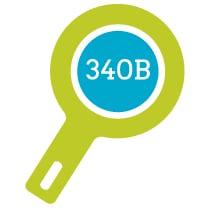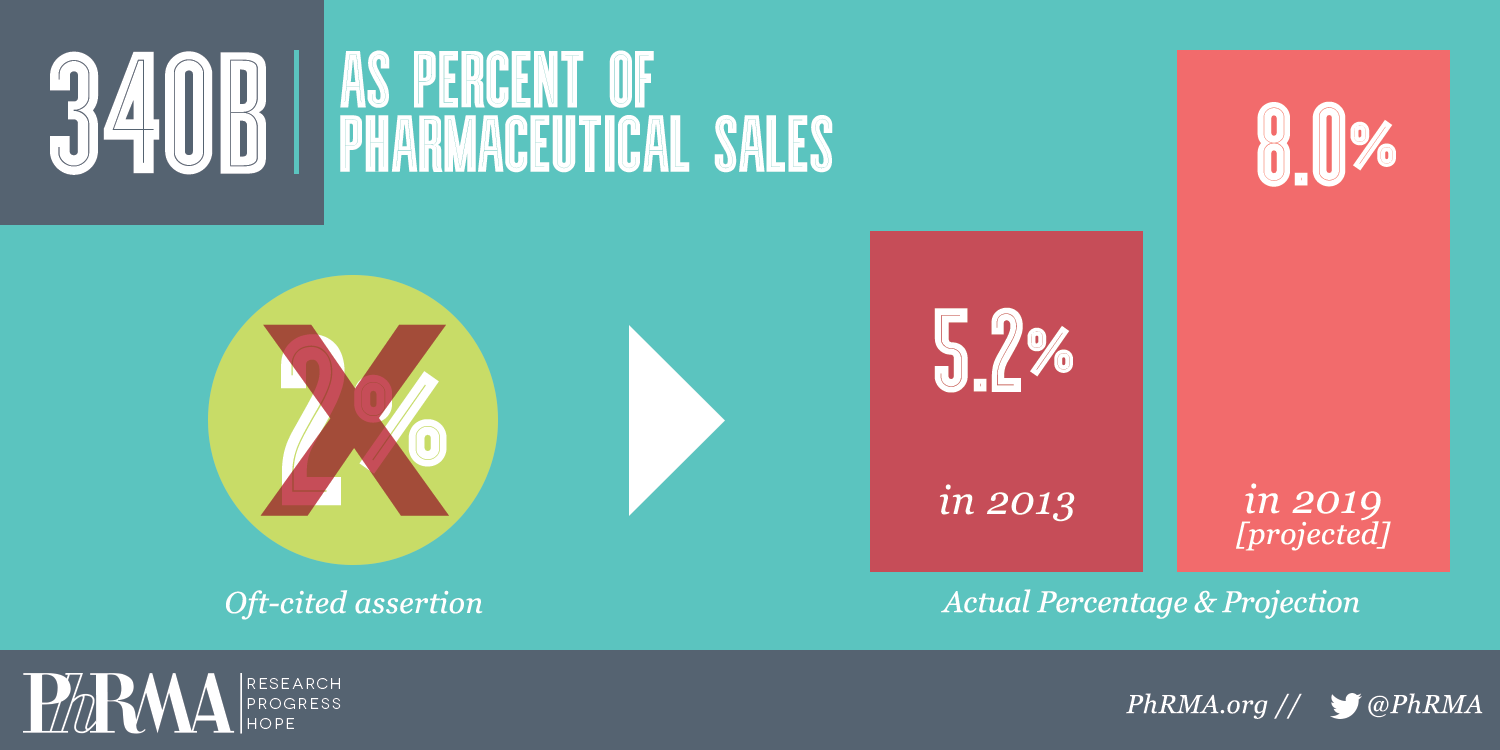 If you are familiar with the 340B program, you have probably heard the oft-cited assertion that 340B only represents 2% of pharmaceutical sales.[1] But just because a statistic is widely repeated, doesn’t mean it’s accurate. In fact, in this case the statement is both wrong and very misleading.
If you are familiar with the 340B program, you have probably heard the oft-cited assertion that 340B only represents 2% of pharmaceutical sales.[1] But just because a statistic is widely repeated, doesn’t mean it’s accurate. In fact, in this case the statement is both wrong and very misleading.
In order to correctly calculate the percentage of overall pharmaceutical sales going through the 340B program, you have to keep several things in mind:
 340B purchases are heavily discounted; therefore comparing sales at the 340B price to non-discounted total sales of all medicines would be an apples-to-oranges calculation underestimating the program’s relative size.
340B purchases are heavily discounted; therefore comparing sales at the 340B price to non-discounted total sales of all medicines would be an apples-to-oranges calculation underestimating the program’s relative size.- Total sales numbers are not reported by the government, and using sales numbers published by the prime vendor for 340B – as is often done – is an incomplete estimate since it does not include data on sales made directly to 340B covered entities, AIDS Drug Assistance Program rebate sales and sales made through certain specialty distributors.
- By law the 340B program is supposed to exclude medicines used on an inpatient basis and medicines subject to a Medicaid rebate. When inpatient and Medicaid drug spending are included when calculating total pharmaceutical sales, it inflates the total sales number and therefore decrease the percentage of sales going through 340B.
- The 340B program is currently dominated by sales of branded pharmaceuticals; therefore, estimates of the program’s impact should focus on 340B as a share of brand pharmaceutical sales.
A new paper from the Berkeley Research Group finds when these factors are taken into consideration, 340B as a percent of all sales is actually 5.2 percent. While this number is much higher than the 2 percent figure often cited by the hospitals, it is poised to grow even further in the years ahead. By 2019, the Berkeley Research Group projects the 340B program will account for 8.0 percent of sales.
 As you can see, the 2 percent figure is both inaccurate and misleading. As the true percentage of sales going through the 340B program continues to rise, there will be increasing questions about whether the program is sustainable without significant reforms to refocus the program on the patients and providers the program was intended to help.
As you can see, the 2 percent figure is both inaccurate and misleading. As the true percentage of sales going through the 340B program continues to rise, there will be increasing questions about whether the program is sustainable without significant reforms to refocus the program on the patients and providers the program was intended to help.
[1] http://www.aha.org/research/policy/infographics/340b.shtml
Get instant updates on issues you care about - here. {{cta('579cfd36-897d-4d7c-90cd-6ec935ead1f9')}}



 If you are familiar with the 340B program, you have probably heard the oft-cited assertion that 340B only represents 2% of pharmaceutical sales.
If you are familiar with the 340B program, you have probably heard the oft-cited assertion that 340B only represents 2% of pharmaceutical sales. 340B purchases are heavily discounted; therefore comparing sales at the 340B price to non-discounted total sales of all medicines would be an apples-to-oranges calculation underestimating the program’s relative size.
340B purchases are heavily discounted; therefore comparing sales at the 340B price to non-discounted total sales of all medicines would be an apples-to-oranges calculation underestimating the program’s relative size. As you can see, the 2 percent figure is both inaccurate and misleading. As the true percentage of sales going through the 340B program continues to rise, there will be increasing questions about whether the program is sustainable without significant reforms to refocus the program on the patients and providers the program was intended to help.
As you can see, the 2 percent figure is both inaccurate and misleading. As the true percentage of sales going through the 340B program continues to rise, there will be increasing questions about whether the program is sustainable without significant reforms to refocus the program on the patients and providers the program was intended to help.